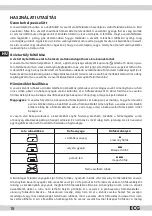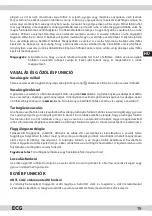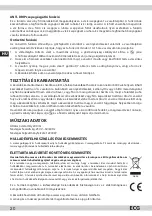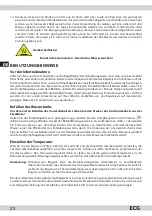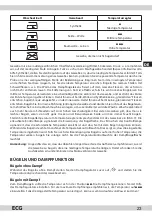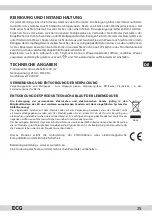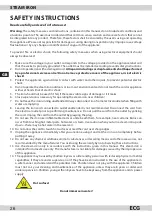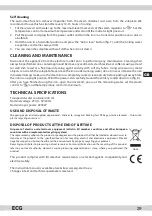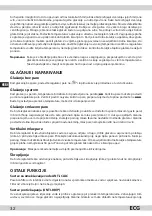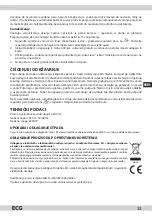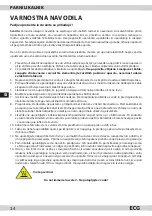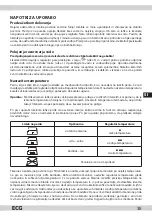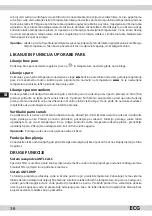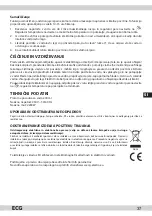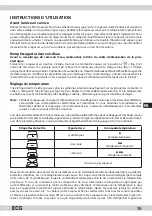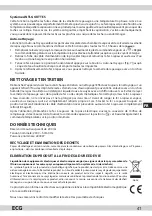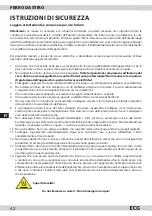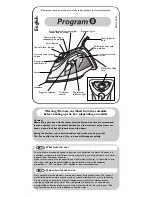
27
GB
OPERATING INSTRUCTIONS
Before putting into operation
Remove the protective foil from the soleplate fi rst! The iron must be used and stored on a stable surface.
When ironing for the fi rst time, heat the iron to the highest degree without using water. At the time, the iron
may emit a trace of smoke and slight smell, which will disappear shortly. The water reservoir can be fi lled
afterwards. After fi lling and heating the iron, leave it to produce steam for at least 1 minute while occasionally
pressing the steam button. This removes any residue from production. We recommend trying the iron on
some common fabric, e.g. a dish towel, prior to using it on your laundry for the fi rst time.
Filling the water tank
Be sure the iron is unplugged from the electrical outlet before fi lling with water!
Hold the iron in an inclined position, switch the steam regulator to a “
g
g
g
g
g
g
g
g
” position (fi g. 5) and pour water
into the opened reservoir, fi lling it up to the max. mark. (Fig. 1). Use water from the water tap only. Distilled
or demineralized water reduces the effi
ciency of the descaling system by changing its physical and chemical
properties. Only the container supplied with the product may be used for fi lling it. The iron must not be fi lled
with water directly from the tap!
Temperature settings
Before ironing, sort the garments according to the international textile care and labeling codes found on
tags. If these are missing, separate the garments based on the type of fabric. Set the temperature regulator
(fi g. 3) to the required temperature, the power on/heating indicator lights up, wait until the indicator turns
off .
Note:
The power on/heating indicator may light up during ironing at various intervals and that means that
the selected temperature is maintained. If you reduce the temperature during ironing, do not start to
iron again immediately, but wait until the indicator lights up again.
When the iron is used for the fi rst time, it may emit a small amount of smoke and also sounds caused by the
expansion of the plastic parts. This is a normal and short-term occurrence. We also recommend that you iron
some ordinary fabric for the fi rst time use.
Laundry tag
Type of fabric
Temperature control
synthetics
z
low temperature
silk – wool
z z
medium temperature
cotton – linen
z z z
high temperature
Fabrics which can not be ironed
We recommend that you iron fabric with unusual fi nish (e.g. sequins, embroidery, prints, etc) at the lowest
temperature. As far as mixes are concerned (e.g. 40% cotton, 60% synthetic material), set the temperature
control according to the fabric requiring the lower temperature. If you are not sure of the fabric composition,
determine the suitable temperature by performing a test on the least noticeable part of clothing. Begin with
the lowest temperature and slowly increase until the ideal temperature is achieved. Never iron places with
traces of sweat, etc: the heat of the iron will fi x the stains on the fabric, which cannot be later removed.
Removing grease stains is more eff ective using a dry iron at medium temperature: excessive heat burns the
grease and could result in the formation of yellow stains. Iron silk, wool and synthetic fabrics inside out to






